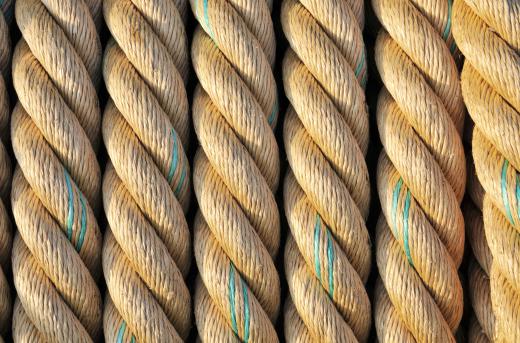What is Flexural Strength?
Flexural strength is an object’s ability to bend without obtaining any major deformities. A standard experiment called the three-point test can calculate an object’s flexural strength. For example, a rectangular slab of concrete is placed on two parallel platforms. Then another object applies load on the central part of the concrete, between the platforms, and gradually increases pressure until the concrete breaks. The flexural strength of concrete is estimated based on the weight of the load that collapses the concrete, the distance between the platforms and the width and thickness of the object being tested.
An object’s flexural strength also correlates with its tensile strength, or the object’s ability to be stretched without significantly changing its shape. When an object is made to bend, it is also somehow stretched, although only in a localized area. In occupational fields such as construction and engineering, knowing a material's flexural and tensile strengths is important in order to make sure that the material is strong enough to use in structures. Hard but brittle objects, such as wood concrete, alloys and plastic, are used more often in construction than elastic and ductile objects such as rubber, gold or silver, so it is more important to evaluate the former’s flexural and tensile strengths.

In theory, an object’s flexural and tensile strengths would be in similar ranges if there is homogeneity in the materials used, meaning that the substances used are mixed in equally. If the substances are not uniformly mixed, then the flexure and tensile strengths might drastically vary in different areas of the object. Another factor that can change an object’s flexural and tensile strengths is defects. For example, a rope with torn fibers might increase its tensile strength, as the fibers can stretch longer, but it might decrease its flexural strength, especially when load is applied on the area where the fibers are weakest.

Temperature and humidity also play a part in altering the strengths. Typically, colder temperature and dry air make an object harder and more brittle, thus decreasing its flexural and tensile strengths. Hotter temperature and more humidity typically increase moisture in an object, thus making it more adaptable and increasing its flexural and tensile strengths.
AS FEATURED ON:
AS FEATURED ON:













Discussion Comments
Testing flexural strength is critical in bridge construction, isn't it? An engineer has to know the strength of the bridge so that vehicles don't break it and wind up in a river. How is that testing done?
Post your comments